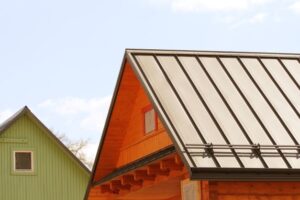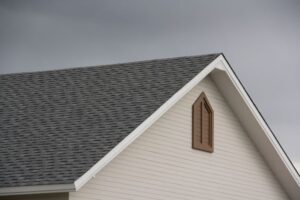7 Great Commercial Roofing Systems You Should Know About
Posted by DigitalVue No Comments on 7 Great Commercial Roofing Systems You Should Know About Roofing
7 Great Commercial Roofing Systems You Should Know About
Commercial Roofing System Experts
At Roofing Systems, our experienced roofing professionals work closely with you to design, install, and maintain a roof system that meets your needs. Commercial roofs come in many shapes and sizes, depending on the building owner’s needs. Whether you want flat roofs, metal roofs, shingle roofs, tile roofs, or some combination thereof, we can help you find what works best for your property.
Commercial Roofing System Benefits
A commercial roof system offers several benefits, including increased safety, protection against weather elements, and improved aesthetics. These factors make it worth investing in a new roof system, but additional considerations exist. Durability, energy efficiency, and cost are three key points to consider when choosing a new roof.
There are numerous types of commercial roofs, each one serving different purposes. Some are designed to withstand extreme weather conditions, while others protect against damage caused by wind and rain. Many factors must be considered when selecting a type of roofing system. These include durability, cost, ease of installation, maintenance requirements, and aesthetics.
There are many different kinds of commercial roofing systems out there. Some are designed specifically for industrial use, while others are built for residential structures. Others are meant for both. Commercial roofs come in various shapes, sizes, colors, and styles. They range in complexity from simple metal panels to elaborate tile designs. In addition, some commercial roofs are flat, while others have sloped surfaces. Flat roofs are usually found in large warehouses and factories. Slope roofs are often seen in smaller businesses.
The Evolution Of Roofing Systems
The evolution of commercial roofing materials over the past few decades has resulted in significant improvements in energy performance. Newer technologies such as low-slope roofs, reflective insulation, and solar panels help to increase building energy efficiency while reducing water usage. These advancements are significant given the current climate change trend toward warmer weather and increased precipitation.
The Shape of Commercial Roofing Systems
Commercial roof systems come in three basic shapes: flat, low, and steep. These roof systems are classified into two groups based on the roof’s slope. This classification determines how much weight the roof system needs to support. A flat roof requires less strength than a low slope roof, and a steep slope roof requires the most strength.
The shape of a commercial roof is determined by the type of roof deck used. For example, asphalt shingle roofs are flat roofs, while metal roof decks are low slope roofs.
Single ply roofing systems include TPO, PVC, and EPDM. Each of these roof systems uses a specific type of membrane. Thermoplastics such as TPO and PVC are very flexible, resistant to chemicals and UV rays, and easy to install. However, they do require special equipment and training.
A thermoset membrane is rigid and does not stretch like a thermoplastic membrane. Its installation requires specialized tools and skills. In addition, thermoset membranes cannot be recycled.
Spray Polyurethane Foam Roofing
The benefits of spray polyurethane foams are well documented. They are durable, long-lasting, fire resistant, and environmentally friendly. Many manufacturers claim that their products can last up to 50 years without maintenance. However, while there are many advantages to installing an SPF roof, it is essential to understand what you are getting yourself into. Several SPF systems exist, including rigid, semi-rigid, and flexible foam. Each one offers unique benefits and drawbacks.
Rigid foam roofs are considered the strongest and best performing SPFs. These systems offer excellent resistance to wind uplift forces and hail damage. They are typically thicker than semi-rigid and flexible foams, making them better suited for large-scale projects such as warehouses and factories. Unfortunately, rigid foam roofs tend to be heavier than other SPFs, making them less desirable for smaller projects like single-family homes.
Semi-rigid foam roofs are similar to rigid foam roofs, except they do not require a separate membrane to support the foam. This allows them to be lighter weight than rigid foams. Semi-rigid foam roofs provide reasonable protection against wind uplift forces and hailstorm damage. They are often recommended for use on low-sloped roofs whose weight does not exceed 25 pounds per square foot.
Flexible foam roofs are ideal for small projects. Because they are flexible, they allow for more significant movement during high winds and heavy rains. They are also easier to transport than rigid foam roofs because they do not require a particular frame to hold them together. Finally, flexible foam roofs are lightweight, easy to handle, and come in various colors.
While each type of SPF has pros and cons, it is essential to consider how much money you want to spend before choosing a particular type of SPF. If you plan to live in your home for 10+ years, investing in a more expensive roofing solution might make sense. However, if you plan to move within five years, you might choose a cheaper product to save some money upfront.
Single-Ply Membrane Roofing
Single-ply membrane roofing is a type of roof covering used for industrial, commercial, and residential buildings. This type of roofing is very durable and long-lasting. It is commonly found in large structures such as factories, warehouses, schools, hospitals, etc. A single-ply membrane roof system consists of three layers: the waterproofing membrane, the substrate, and the cover sheet.
The waterproofing membrane is the outermost layer of the roofing and provides the primary barrier against water intrusion. There are different types of membranes based on the type of application. Some common examples include ethylene propylene diene monomer (EPDM), chlorosulfonated polyethylene (CSPE), and thermoplastic olefin (TPO). These membranes come in rolls measuring up to 50 feet wide. They are typically installed over rigid insulation boards like fiberglass batts or mineral wool.
The substrate is the middle layer of the roofing. It supports the waterproofing membrane and helps prevent moisture penetration into the building structure. Typical substrates include built-up roofs, modified bitumen shingle, tar paper, and felt. Shingles are often used for medium-sized projects because they provide good coverage while being easy to install.
The cover sheet protects the waterproofing membrane from UV rays and weather conditions. It is typically made out of aluminum foil or plastic film.
Metal Roofing
Metal roofing is one of the most popular types of commercial roofing. It offers many advantages over traditional asphalt shingle roofs, including durability, strength, and fire resistance. Metal roofing is typically lighter than asphalt shingles, allowing it to be placed directly on top of an existing roof without tearing off old roofing material. Metal roofing is also much more robust than asphalt shingles because it is constructed out of thicker gauge metal. In addition, unlike asphalt shingles, metal roofing does not require painting every few years, making maintenance easier.
Shingle Roofing
Shingling is one of the oldest forms of roofing. It dates back to ancient Egypt, where the Egyptians used wooden shingles. Over time, people developed different types of shingles based on what type of roof they wanted to build. Some earliest examples include clay tiles, thatch, and stone slabs. There are many kinds of shingles today, ranging from traditional asphalt to modern architectural shingles.
Asphalt shingles are probably the most popular type of shingle today. They are inexpensive, easy to install, and provide reasonable protection against wind and water damage. However, asphalt shingles do not offer much resistance to fire. Although you might think you would want to use a fire-resistant shingle on your home, you don’t need to worry about fire because most fires start inside a house. A house fire starts because of something flammable like paper, clothing, furniture, or even electrical wires. Because of this, fire-resistant shingles aren’t necessary.

Architectural shingles are designed to look nice and give a beautiful appearance to a building. Most architectural shingles are made of multiple layers of asphalt and fiberglass. This makes the shingles more durable and weatherproof. Architectural shingles are usually expensive compared to asphalt shingles, but they are worth the money since they last longer.
Built-Up Roofing
Homeowners have used tar and gravel roofing in the United States since the early 1900s. They consist of multiple layers of asphalt or tar sandwiched between fiberglass felt or fabric layers. This type of roofing is durable and cost-effective. However, it requires professional installation.
The benefits of built-up roofing include durability, low maintenance costs, and long life expectancy.
Green Roof
A green roof can last from about 30 to 50 years. Depending on the type of plant used, it can provide shade, cooling, humidity regulation, soil stabilization, erosion prevention, and habitat for birds and insects.
The membranes are usually polyethylene, resistant to UV rays, temperature extremes, and wind. Many green roofs are built over parking lots, rooftops, and swimming pools.
Advantages include:
- Protection from rain, snow, hail, sun, and wind.
- Possible utility and government incentives.
- Improved aesthetics.
- Increased property value.
Downside: Green roofs take up a lot of room, depending on the project size. The cost of installation varies widely. And there are ongoing costs associated with maintaining the system.
Modified Bitumen Roofing
Modified bitumen roofs are one of the fastest-growing commercial roofing materials today. They account for about 20% of all commercial roof installations. This roof offers several advantages over traditional asphalt shingle roofs, including increased longevity, durability, and lower maintenance requirements.
The main difference between modified bitumen and conventional asphalt shingle roofs is how the material is applied. Traditional asphalt shingles are usually built up in multiple layers. Each layer is attached to the previous layer with hot asphalt adhesive. Once the final layer is complete, it is covered with a protective membrane called tar paper.
Modified bitumen is applied directly onto a roof deck like a coating. When cured, it becomes a solid sheet bonded to the substrate. Unlike asphalt shingles, there is no need for additional layers or tar paper. It can be removed and replaced if anything needs replacing without disturbing the existing roof structure.
Roofing Systems LLC Knows Commercial Roofing
There are many options when choosing a roofing system for your home or office. You want something durable, long-lasting, affordable, and most importantly, functional. At Roofing Systems in Denver, Colorado, we know how important it is to find just the right product for your needs.
Our goal is to provide homeowners and businesses with the highest quality products and services at the lowest prices. Whether you’re looking for a residential shingle, tile roof, flat roof, metal roof, or anything else, we’ve got you covered.
We understand that every roof is different, and we work hard to ensure that each one gets the attention it deserves. From consultation to installation, we’ll guide you through the process, ensuring you get precisely what you want.
Recent Posts
7 Great Commercial Roofing Systems You Should Know About
Learn About Asphalt Composition Shingles in Denver, CO
Do you have any questions?
Contact us at the Roofing Systems office nearest to you or submit a business inquiry online
Contact Us
